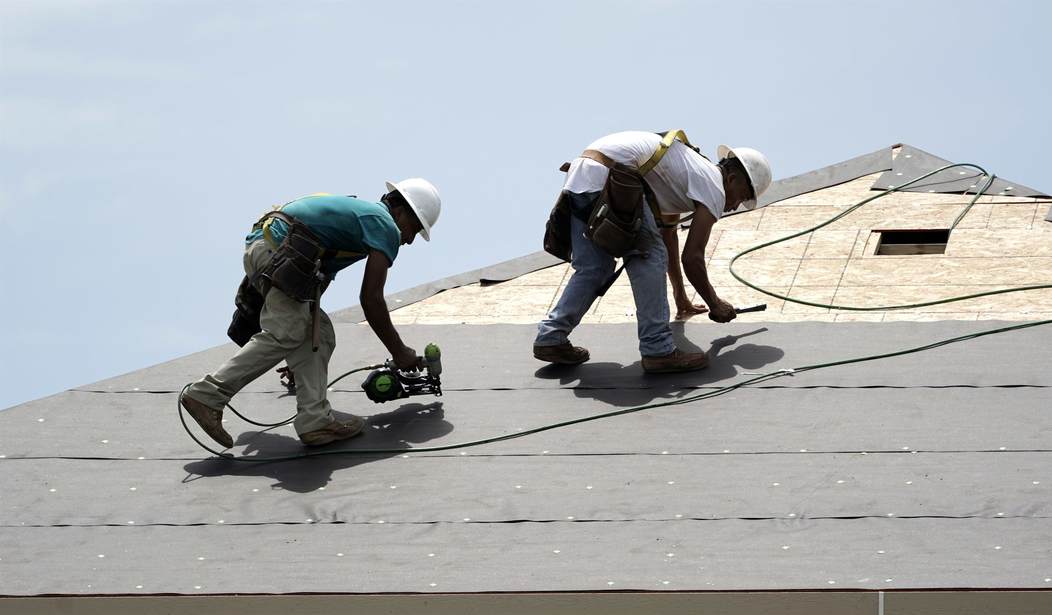The current troubles in the American housing market are an important sign that the broader U.S. economy is slowing. The inevitable results of wrongheaded economic policies are finally overpowering the massive stimulus that was perpetrated in response to the COVID-19 lockdowns.
Particularly egregious and disastrous were the reckless spending increases by President Joe Biden and congressional Democrats—with no Republican votes at all—in 2021 and 2022 after the economy had already recovered.
To stop the inflation caused by that overspending, the Federal Reserve (Fed) tightened the money supply significantly in 2022 and early 2023. That increased mortgage interest rates from around 3 percent a couple of years ago to nearly 7 percent now. That, in turn, has driven the home sales index to its lowest point this century—even lower than during the late-2000s housing crisis and the 2020 lockdowns.
New home sales fell by 14.9 percent from April to May, the largest month-to-month drop since September 2022. Sales of new homes decreased in June by an additional 0.6 percent. “That leaves new home sales down 7.4% YoY,” ZeroHedge reported.
“It is the slowest pace of home sales in any June since 1999, when the NAR began tracking the data,” Morningstar reports.
Financial commentator Peter Schiff accurately calls this “a Fed-induced housing crisis” caused by “wasteful government spending and expansionary monetary policy.”
The interest rate increases the Fed imposed to stop Bidenflation are pushing housing prices higher because homeowners with low-cost mortgages are discouraged from putting their houses up for sale. They don’t want to spend 7 percent on a new mortgage when they are paying 3 percent now. The consequent artificially induced decrease in housing inventory raised the median selling price of an existing family home in the United States from $378,600 in January of this year to a record $426,900 in June—4.1 percent higher than a year earlier.
High mortgage interest rates and high prices have made the housing market “unaffordable to millions of Americans,” The Wall Street Journal reports. In fact, the price increases are squeezing all but the wealthiest buyers out of the market. The scarcity of homes on the market is sparking “bidding wars for desirable properties,” The Wall Street Journal story reports. “More than one-third of home sales in June went for more than their list price, according to real-estate brokerage Redfin.”
Home purchases are now tilted toward the high end of the market and wealthier buyers, Morningstar notes: “Sales of million-dollar-plus homes saw an uptick in June, the only increase among all price categories. Nationwide, sales of homes priced over $1 million rose 3.6% in June as compared with a year ago.”
In response, Fortune magazine notes, some builders are making new houses smaller, eliminating spaces such as hallways (derided as “unnecessary circulation space”) and creating more “flex space” to lower construction costs so they can increase the price per square foot while overall prices continue to rise.
“Last year, about a quarter of new homes were downsized to cut costs” while “new-construction home prices increased by 2.5% in 2023, peaking at nearly $441,000 in August,” Fortune reports. Economists describe such downsizing as efficiency, but homebuyers see it as less house for more money.
In sum, housing prices are at a record high, indicating a shortage of supply, and sales have collapsed, yet the difficulty of selling has not driven prices down. That is a sign of a highly disturbed economy.
The combination of high prices and low sales typified by the housing market has a well-known name when applied to the overall economy: stagflation.
Simultaneous increases of price and scarcity, as seen in the housing market, have been duplicated in other economic sectors, especially major components of people’s well-being such as health care, food, energy, water, automobiles, and other basics of life, plus taxes, household debt, and other financial obligations. All these factors have an outsized effect on people with low to middle incomes.
Although COVID-19 supply chain problems probably contributed to the scarcities, the pandemic has been over for nearly three years. If the supply chains have still not recovered, that is another sign of a distorted economy.
Thus, the troubles in the housing market are emblematic of the current problems in the U.S. economy: low output suppressed by high energy costs and price inflation of business inputs, tighter credit that puts a further drag on output, increased borrowing by government and consumers alike at a much higher cost, and high government spending, which directs economic activity away from things people really want (indicated by the fact that they will pay for them voluntarily) to things that other people want them to want (indicated by the fact that they have to be forced to pay for them through taxes or debt, the latter being merely delayed taxes).
The fundamental problem harming all these markets, and the American people who depend on them for desirable and affordable goods and services, is excessive federal spending and regulation. While claiming to “rescue America” and achieve “inflation reduction,” government wastrels have done the opposite, making affordable housing and other necessities of life magically disappear.
S. T. Karnick (https://stkarnick.substack.com/) is a senior fellow and director of publications for The Heartland Institute, where he edits Heartland Daily News and writes the Life, Liberty, Property e-newsletter.













Join the conversation as a VIP Member